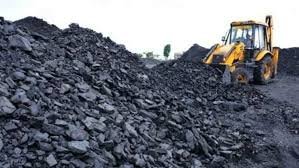08 Oct 2021 Coal crisis in India

- India is facing a severe coal shortage. Background:
- India is the second-largest importer, consumer and producer of coal, and has the world’s fifth-largest reserves. It mainly imports from Indonesia, Australia and South Africa.
How bad is the situation?
- The situation is “touch and go”, and could be “uncomfortable” for up to six months.
- The coal stocks at its thermal power plants can supply just days of fuel.
- On October 1, the power ministry said that the 135 thermal power plants in the country had only an average of about 4 days of coal stocks left.
- This is worrisome because coal-fired plants make up nearly 70% of India’s power source mix.
Reasons for the shortage:
- Heavy September rains in coal mining areas hit production and delivery and plants failed to build up their stocks pre monsoon.
- Diamond had outstripped supply, despite increased buying from coal india.
- Sharp fall in imports due to high prices.
Impact of the shortage:
- If industries face electricity shortages it could delay India’s economic reopening.
- Some businesses might downscale production.
- India’s population and underdeveloped energy infrastructure will mean the Power Crisis could hit long and hard.
What next?
- Coal India and NTPC Limited are working to raise output from mines.
- The government is trying to bring more mines on stream to boost supply.
- India will need to amp its imports despite the financial cost.
Recent Reforms in coal sector:
- Commercial mining of coal allowed, with 50 blocks to be offered to the private sector.
- Entry norms will be liberalised as it has done away with the regulation requiring power plants to use “washed” coal.
- Coal blocks to be offered to private companies on revenue sharing basis in place of fixed cost.
- Coal gasification/liquefaction to be incentivised through rebate in revenue share.
- Coal bed methane (CBM) extraction rights to be auctioned from Coal India’s coal mines.
Challenges Ahead :
- Coal is the most important and abundant fossil fuel in India. It accounts for 55% of the country’s energy needs. The country’s industrial heritage was built upon indigenous coal.
- Commercial primary energy consumption in India has grown by about 700% in the last four decades.
- The current per capita commercial primary energy consumption in India is about 350 kgoe/year which is well below that of developed countries.
- Driven by the rising population, expanding economy and a quest for improved quality of life, energy usage in India is expected to rise.
- Considering the limited reserve potentiality of petroleum & natural gas, eco-conservation restriction on hydel project and geo-political perception of nuclear power, coal will continue to occupy centre-stage of India’s energy scenario.


No Comments